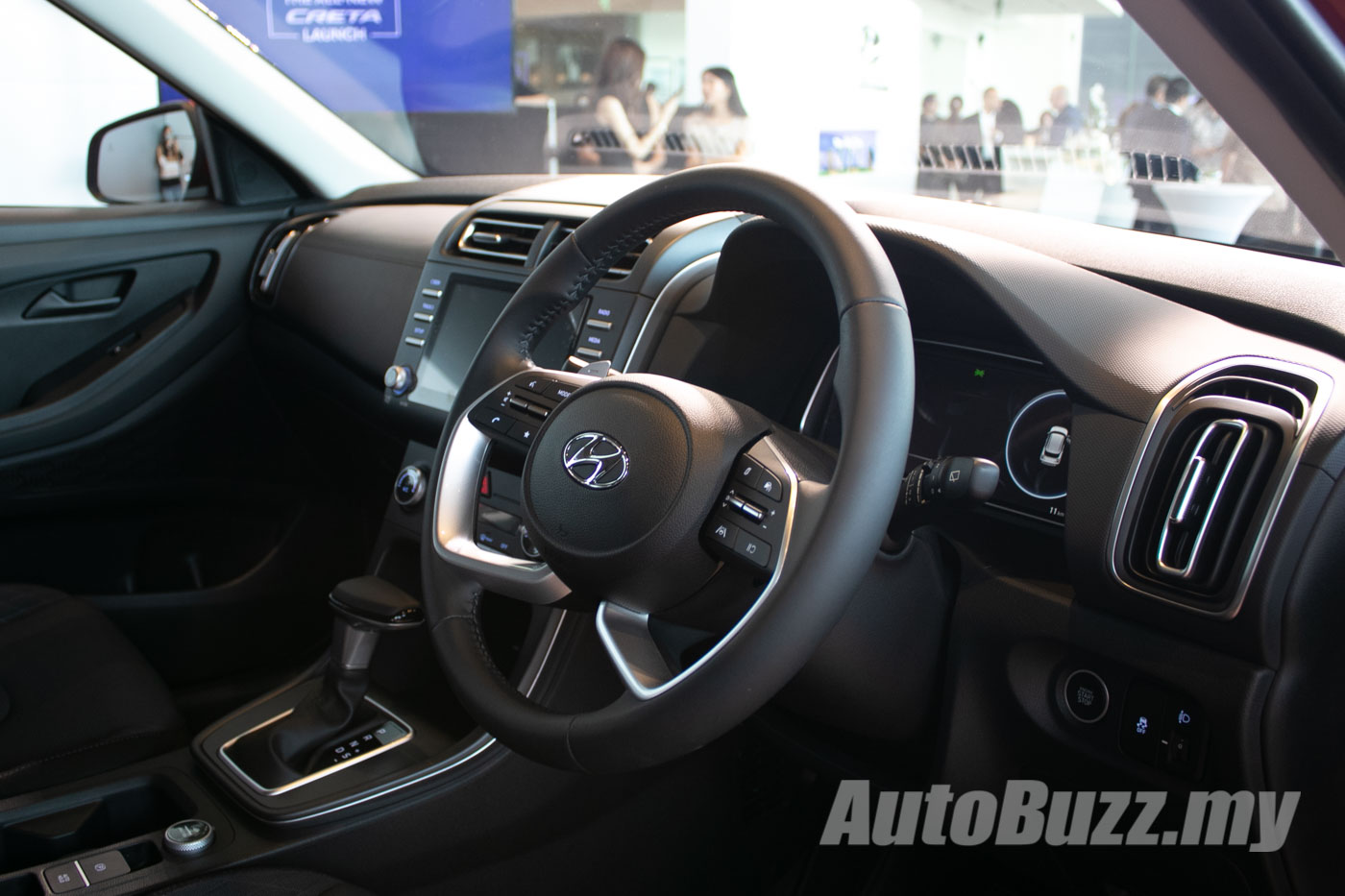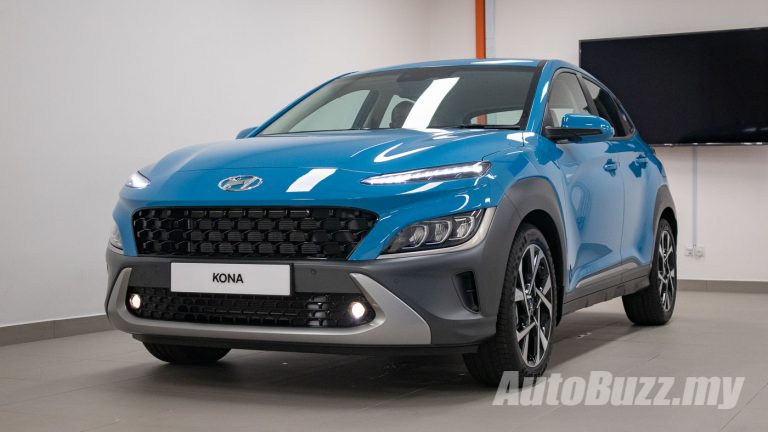The second-generation Hyundai Creta has just been launched in Malaysia today, marking the official debut of the compact crossover model here on our shores. Take a quick glance at the company’s model line-up, though, and you’ll notice they now have two B-segment crossovers on offer for the Malaysian market – the Creta, and the Kona.
While we can’t comment on the company’s plans and strategies, we can compare the two models head-to-head, to hopefully give you a better idea on which B-segment SUV to choose – if you’re dead-set on getting a Hyundai, that is.
The all-new Hyundai Creta is priced at RM149,888 here in Malaysia, on-the-road, without insurance. So for pricing parity, we’ll be mostly comparing it to the Hyundai Kona 2.0 Active and 1.6 Turbo variants, priced at RM141,328 and RM150,888 respectively (accurate as of time of writing).


Hyundai Creta vs Kona – Exterior
The Hyundai Creta and Kona are both built around wildly different styling languages; the Creta has a more upright, traditional SUV-like appearance, while the Kona adopts a sleeker and (arguably) more fashionable profile, thanks to its raked rear windscreen and sharper front fascia.
Both models are equipped with LED headlights and daytime running lights as standard, the latter hidden in the Parametric Jewel grille on the Creta. The Kona does get the larger (and more interesting-looking) wheels at 18-inches in diameter, and if you opt for the 1.6 Turbo variant, there’s also the dual-tone black roof treatment, alongside roof rails as standard – despite the Creta being the more “rugged-looking” model of the two.
Where the Creta wins, though, is in size. The new kid on the block measures slightly larger in almost every dimension, but most notably in length – where it’s 110 mm longer than the Kona. The elongated profile translates to not just a more substantial stance on the road, but also more space on the interior – which we’ll get to later.

Hyundai Creta vs Kona – Performance
The Hyundai Creta is offered in a single variant in Malaysia, powered by a 1.5-litre naturally-aspirated inline-four engine with 115 hp and 144 Nm of torque. Power is sent to the front wheels via a SmartStream IVT gearbox (Hyundai-speak for CVT), taking 12 seconds to reach 100 km/h from a standstill, and onward to a top speed of 170 km/h.
As for the Hyundai Kona, you’ll have a choice between two powertrain options. The cheaper of the two variants get a 2.0-litre naturally-aspirated inline-four mill, offering 149 hp and 180 Nm, while the other gets the significantly more powerful 1.6-litre turbocharged engine, making 198 hp and 265 Nm.
The former engine is paired to the same IVT gearbox for a century sprint time of 9.7 seconds, while the 1.6-litre turbocharged mill gets a seven-speed dual-clutch transmission for a sportier driving feel, and an even quicker 0-100 km/h acceleration time of just 7.7 seconds. That said, the Hyundai Creta does come with gearshift paddles behind the steering wheel to at least simulate the experience.
READ MORE: 2023 Hyundai Creta launched in Malaysia, RM150k – Still want that X50?


Hyundai Creta vs Kona – Interior
Both the Creta and Kona are quite equally matched in terms of interior equipment, with both models getting the same 10.25-inch digital instrument cluster and eight-inch touchscreen infotainment display as standard – the latter coming with wireless Apple CarPlay and Android Auto connectivity.
The Kona does – once again – stand out with its 10-way power-adjustable driver seats, a wireless charging pad (on the 1.6 Turbo), head-up display, along with an ambient lighting system and leather upholstery that can be specified in light beige if you so choose, further elevating the premium atmosphere of the cabin; the Creta is only available with fabric seats.
As we mentioned earlier, though, the all-new Hyundai Creta is the bigger car of the two, boasting 416 litres of cargo room at the back with the rear seats in its normal position, while the Kona only has 374 litres. The rear legroom and headroom on the Hyundai Creta should also be more spacious, although no official measurements are available for our comparison.

Hyundai Creta vs Kona – Advanced safety
Both the Creta and Kona are similarly equipped with Hyundai’s SmartSense advanced driver assist systems, with features including autonomous emergency braking, blind-spot monitor and collision avoidance assist, lane keeping and lane following assist, rear cross traffic collision avoidance assist, leading vehicle departure alert, and driver attention warning.
Although if you spring just RM1,000 more over the Creta for the Hyundai Kona 1.6 Turbo, you’ll also get adaptive cruise control, which makes it capable of Level 2 semi-autonomous driving.
READ MORE: Hyundai Kona N Line, 1.6 Turbo launched in Malaysia, from RM147k
Hyundai Creta vs Kona – Which one to buy?
With the specs laid out side-by-side, it appears that the Kona remains the better value pick between the two, as even the 2.0 Active variant (at RM8,560 cheaper) comes better equipped than the Creta, not to mention its better performance. At just RM1,000 more expensive than the Creta, the Hyundai Kona 1.6 Turbo’s significantly better performance just puts it in a completely different league when compared to the new kid on the block.
Hyundai Sime Darby Motors does try to sweeten the deal a little with the complimentary three-year/50,000 km free service package, although that’s still just limited to the first 150 customers (for now).
Unless you really like the looks of the Hyundai Creta, or truly need that extra 42 litres of cargo room at the back, we unfortunately cannot recommend the new B-segment crossover – not at RM149,888. Do you agree with our on-paper assessment? Let us know your thoughts in the comments below!
GALLERY
Hyundai Creta Plus
















Hyundai Kona 2.0 Active






















